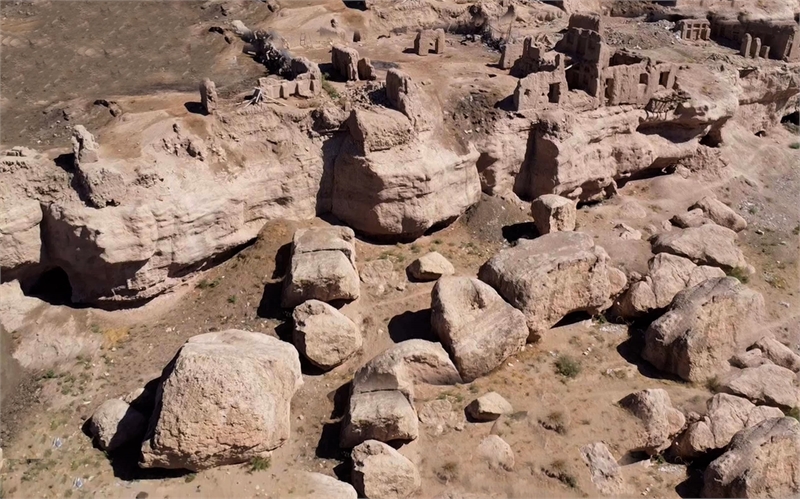And I see the women of the village carrying harvested grapes from their colorful vineyards in baskets woven from wheat stalks and wooden crates as they make their way back to their homes, a scene that serves as a reminder of their ancestral heritage during the fall season. A legacy that, much like the harvested grapes used to produce Dooshaab, or grape syrup, is both sweet and delectable.
The village of Qerveh, located in Zanjan Province, Iran, is renowned for its numerous vineyards, which showcase a diverse array of grape varieties and depict paradise. This village has very famous vineyards and produces more than 18 types of grapes.
One of the items and products derived from grapes that is always of interest to farmers and families in this village is the preparation of grape syrup, known as Dooshaab, which is used more than any other product and has high nutritional value. Grape syrup, also known as Dooshaab, not only has medicinal properties but is also commonly enjoyed with yogurt at breakfast, as a snack, or as a beverage by families.
The traditional skills for preparing Dooshaab in the historic village of Qerveh, Zanjan, involve both men and women donning clean clothing and, with prayers and gratitude to God, heading to the vineyards to collaboratively harvest large, healthy grapes, which they then transport home in baskets woven from wheat stalks and wooden crates.
The clusters of grapes are washed with clean water in the homes and placed in clean bags to be crushed and pressed for their juice. The grape juice is strained through a cloth and poured into a suitable pot, which is then placed over an open flame to be cooked. As the grape juice approaches boiling and bubbles begin to form around the edges of the pot, a specific type of white clay is gradually added while stirring. The addition of this specific clay helps purify the grape syrup by causing the pulp, along with light and fine particles, to rise to the surface as foam, while allowing the heavier materials to settle at the bottom of the pot with the clay.
The foam formed on the grape juice is separated, and then the fire under the pot is extinguished. The container holding the grape juice should be left to stand for 12 hours to allow the juice to settle properly, after which it is transferred to another container. The grape juice is then poured into a cotton bag, and a heavy stone is placed on top to extract the pure grape juice. The purified grape juice is poured into a pot and placed over gentle heat to simmer and thicken, resulting in grape syrup, which is then removed from the heat to cool down and become ready for use.
When the grape syrup is obtained, the women of the village use the remaining pulp from the grape clusters to make vinegar. In some families, a few quince fruits are also added to the syrup to be cooked together. The ceremony for preparing Dooshaab is a heritage that spans thousands of years in the Turkic regions of Iran, held annually in the fall within local communities, particularly in the historic village of Qerveh in Zanjan Province.
The village of Qorveh is a settlement with a history of three thousand years, featuring significant historical artifacts. The Pearl Valley (Munjuklu Valley), the shrine of Imamzadeh Abdul Khair bin Musa bin Jafar, the architecture of traditional houses, the entrance bridge to the village adorned with the Faravahar symbol, the watermill, and the Grand Mosque of Qerveh are among the historical sites of this village.

The architecture of traditional houses
The Grand Mosque of Qerveh
---------------------
This article was contributed by Mr. Akbar Karimi, the international reporter for Arirang Culture Connect and the Founder and Managing Director of the Samte Ganjineye Ghoghnoos Cultural-Artistic Institute in Iran. His leadership in preserving and promoting Iranian intangible cultural heritage, along with his extensive experience in cultural-artistic research and his active participation in international forums such as UNESCO and ICCN, enriches his contributions to the global cultural dialogue.
Translated by Miss. Fereshte Abdi
Photo by: Mr. Mojtaba Jafarloo